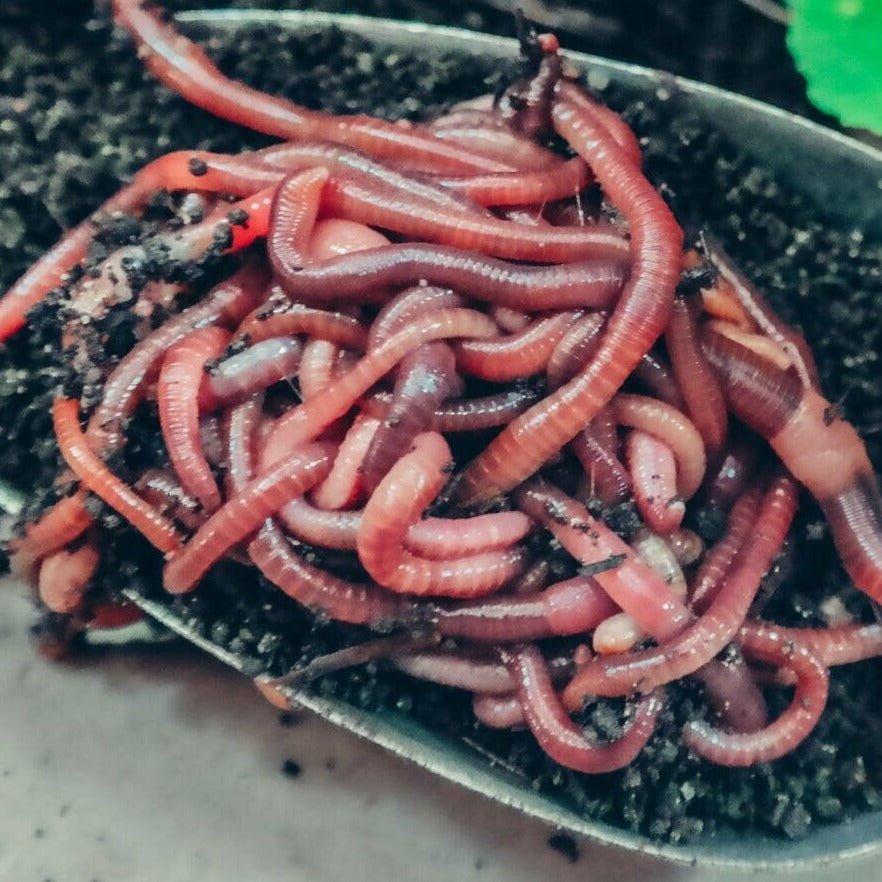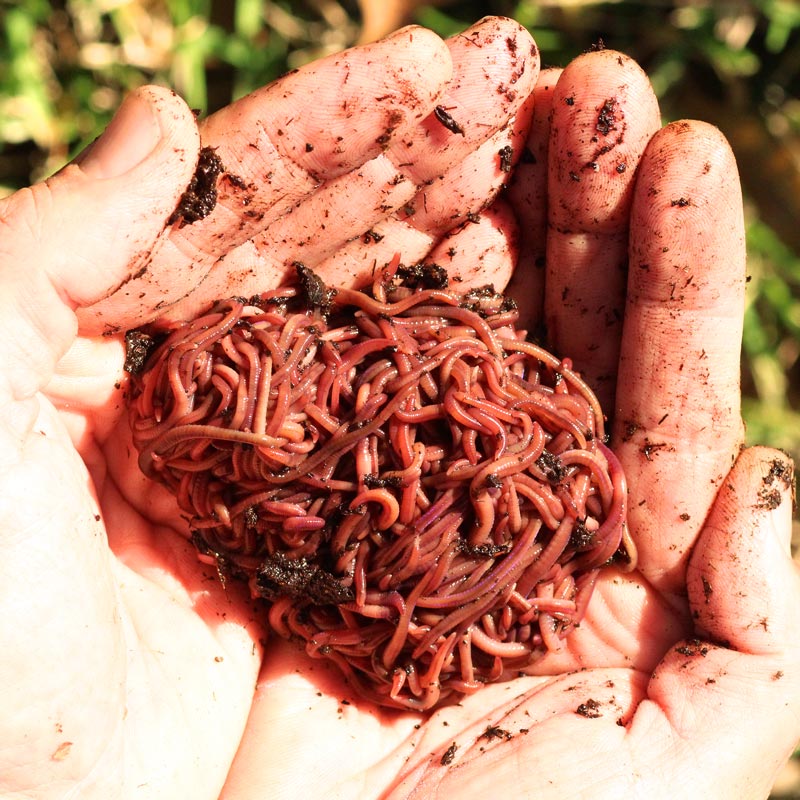Red Wiggler Worms - Crucial for Healthy and Efficient Gardens
Red Wiggler Worms - Crucial for Healthy and Efficient Gardens
Blog Article
Red Wiggler Worms Demystified: Opening the Tricks of Vermiculture for Greener Living and Nutrient-Rich Dirt
In the realm of sustainable practices for improving dirt quality and advertising eco-conscious living, red wiggler worms play a critical yet typically forgotten function. These humble creatures possess the amazing capability to transform natural waste into nutrient-rich castings that act as a potent all-natural fertilizer. By diving into the globe of vermiculture, one can reveal a myriad of benefits that expand much past typical composting techniques. Comprehending the ins and outs of caring for these worms, maximizing their environment, and utilizing their spreadings can result in a greener way of life and healthier dirt for plants to prosper.
The Function of Red Wiggler Worms
Red Wiggler worms play a vital duty in composting systems by efficiently breaking down raw material right into nutrient-rich castings. These voracious eaters eat a variety of organic products, such as cooking area scraps, yard waste, and paper items. As they feed, the worms' digestive system processes damage down the natural matter right into a fine, dark, and nutrient-dense material recognized as worm castings or vermicompost.
The castings produced by Red Wiggler worms are very useful for dirt health and wellness and plant development. They are abundant in necessary nutrients like phosphorus, potassium, and nitrogen, which are essential for supporting healthy plant advancement. Furthermore, worm spreadings have useful germs and enzymes that help enhance soil framework, boost water retention, and improve nutrient uptake by plants.
Advantages of Vermicomposting

It enhances dirt framework, boosts dirt oygenation, and increases dirt wetness retention. Vermicompost also enriches the soil with essential nutrients like phosphorus, nitrogen, and potassium, promoting plant growth and overall soil fertility.
In addition, vermicomposting supports lasting horticulture methods by giving a chemical-free and all-natural alternative to synthetic fertilizers. Red Wiggler Worms. This eco pleasant approach not only enhances the soil yet also helps in reducing dependence on dangerous chemicals, promoting a greener and more lasting method of horticulture
Setting Up a Worm Container
When establishing a worm container for vermicomposting, proper arrangement is crucial to make certain the success of the composting process. The initial action in setting up a worm container is picking an ideal container. This can be a plastic bin or wood box that provides adequate area for the worms to walk around and has appropriate water drainage openings to avoid waterlogging. Next off, a bedding material such as shredded paper, cardboard, or coconut coir must be included in the bin. This bed linen gives a comfy environment for the worms and assists preserve moisture degrees.
After including the bed linens, present the red wiggler worms to the container. The worms must then be supplied with food scraps such as fruit and veggie peels, coffee grounds, and eggshells.
Frequently check the dampness levels and temperature in the worm container to guarantee optimum conditions for the worms. With appropriate arrangement and upkeep, the worm container will effectively convert natural waste right into nutrient-rich compost for your plants and garden.
Gathering Worm Castings
To efficiently collect nutrient-rich worm spreadings from your vermicomposting system, a methodical harvesting technique is essential. There are a couple of key steps to follow to ensure an effective process when it comes time to collect the worm spreadings. To start with, quit adding fresh food scraps to one side of the worm container for a pair of weeks before gathering. This urges the worms to move sideways with fresh bed linen and food, making it much easier to dig the castings from the opposite side.

Troubleshooting Common Issues
Identifying and resolving usual difficulties that might develop throughout the vermicomposting process is important for maintaining a effective and healthy and balanced worm bin. One typical concern that vermicomposters experience is overfeeding. Adding excess food scraps can cause a build-up of moisture and level of acidity in the worm bin, potentially harming the worms. To avoid this, feed the worms in small amounts, guaranteeing that the food scraps are properly broken down prior to adding a lot more. One more concern is unpleasant odors emanating from the worm bin. Foul smells suggest anaerobic problems, generally brought on by overwatering or poor air flow. To remedy see post this, readjust the moisture levels by adding completely dry bed linen materials like shredded newspaper or cardboard and rise oygenation by transforming the bedding frequently.
Additionally, if the worm populace is decreasing or the worms show up harmful, it can be due to ecological stress factors such as extreme temperatures or pH degrees. Keeping track of these factors and making essential modifications is vital for the wellness of the worms. By repairing these common issues without delay, vermicomposters can ensure a smooth and effective vermicomposting procedure while keeping a growing worm population.

Conclusion
In final thought, red wiggler worms play a critical duty in vermiculture by damaging down raw material right into nutrient-rich soil. The advantages of vermiculture consist of greener living and improved dirt high quality. Establishing up a worm bin is crucial for effective vermiculture, and harvesting worm spreadings offers valuable compost for horticulture. By comprehending and troubleshooting usual issues, individuals can unlock the keys of vermiculture for sustainable living and healthier dirt.
As they feed, the worms' digestion processes break down the natural issue into a fine, dark, and nutrient-dense material recognized as worm castings or vermicompost.
The castings created by Red Wiggler worms are very advantageous for dirt health and plant growth. Adding excess food scraps can lead to an accumulation of wetness and level of acidity in the worm bin, possibly harming the worms.In addition, if the worm investigate this site population is declining or the worms appear unhealthy, it could be due to ecological stress factors such as extreme temperature levels or pH degrees. Establishing up a worm container is essential for successful vermiculture, and gathering worm spreadings supplies important garden compost for horticulture.
Report this page